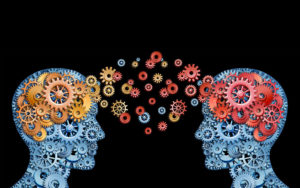As a teacher, I have so many responsibilities to consider on a day-to-day basis. It can be easy to get bogged down by all the little details of the classroom, like which students have a difficult time sitting next to whichever other students, and whether all photocopies are made or pencils have been sharpened. Nevertheless, there are two big issues that educators must prioritize, that need to be the central focus of the classroom. In fact, these two issues should drive the management of the classroom. These issue are: What is learning? And, what practices should I utilize in my own teaching to best support learning?
In many classrooms, there is an emphasis on memorizing facts. Dates, lists, and names are featured prominently in textbooks and on tests in many classrooms, making it appear as if the skill of memorizing data is a critical one (Bransford, Brown, & Cocking, 2000). But remembering data is not the same as learning and understanding content. While remembering refers to being able to recall facts for a short time and within a limited context, real learning is, according to Bransford et al. (2000), in part, about the ability to recall facts on an as-needed basis. It also entails being able to store those facts in long-term memory, organized within a bigger context of knowledge. Further, being able to apply those facts to solving problems, transfer learning across situations, and call facts to mind when needed are the results of true learning.
There are many teaching methods that can be implemented in order to help students to truly learn material, according to Bransford et al. (2000). Of those many teaching strategies, there are three specific strategies I can immediately implement in my classroom to aid in the learning process. First, I need to know my students’ prior knowledge about a subject, and either correct it or build upon it. Second, I need to take time to teach my students techniques for metacognition. Third, by utilizing all the aspects of an inquiry-based learning approach to instruction, my students will have greater opportunities to learn the content of my class.
Prior knowledge is a critical factor to be considered before any kind of instruction begins. In some cases, students may have correct prior knowledge about a topic. They may also possess no prior knowledge at all, or even incorrect prior knowledge. New knowledge, according to Piaget and Vigotsky (as cited by Bransford et al., 2000) is based on what students’ already know and believe, whether or not it is correct. Also, if they do not have any pre-existing knowledge, they will have a difficult time constructing learning. Whether formally or informally, I need to discover what my students’ prior knowledge is, so that I can help them to gain the prior knowledge they will need.

Figure 2. When students live in the city and do not get to travel, they may not understand what a dense forest looks like.
A second teaching method that I can begin to employ immediately is to teach my students strategies for metacognition. Strategies for metacognition can, and should, be taught explicitly. Techniques such as predicting outcomes, activating background knowledge, and planning ahead, among others, are often thought to be developed on our own, yet are actually the result of cultural norms. By teaching our students strategies for metacognition, we empower them to “take control of their own learning by defining learning goals and monitoring their progress in achieving them,” (Bransford et al., 2000, p. 18).
Finally, the utilization of an inquiry-based learning approach to instruction can also make a significant impact on students’ learning. According to Bransford et al. (2000), middle school students who learned physics through inquiry-based instruction outperformed high school students who learned via conventional instruction, on physics problems in two different studies. An inquiry-based approach means students are presented with a problem to solve or question to answer, given time to research it, present what they have learned, and reflect on what did and did not work (Wolpert-Gawron, 2016). After a time of active struggle, students are ready for a time of teaching by telling (Bransford et al., 2000).
By considering my students’ prior knowledge, explicitly teaching metacognition, and utilizing all the features of an inquiry-based approach to instruction, I can make great strides toward helping my students learn in my classroom.
References
Ansonlobo. (Photographer). (2016). k [digital image]. Retrieved from https://commons.wikimedia.org/wiki/File:Knowledge-sharing.jpg [Figure 1]
Bransford, J. D., Brown, A. L., & Cocking, R. R. (Eds.). (2000). How people learn: Brain, mind, experience, and school: Expanded edition. Washington, DC: National Academy Press.
Kundzicz, K. (Photographer). (2011). „Góry Czumażowskie” hills (gmina Czarna Białostocka, podlaskie, Poland) in Knyszyn Forest near the Ożynnik hamlet (gmina Wasików) [digital image]. Retrieved from https://commons.wikimedia.org/wiki/File:Podlaskie_-_Czarna_Bia%C5%82ostocka_-_Puszcza_Knyszy%C5%84ska_-_G%C3%B3ry_Czuma%C5%BCowskie_-_E_-_v-NW.JPG [Figure 2]
Wolpert-Gawron, H. (2016, August 11). What the heck Is inquiry-based learning? Retrieved from https://www.edutopia.org/blog/what-heck-inquiry-based-learning-heather-wolpert-gawron

